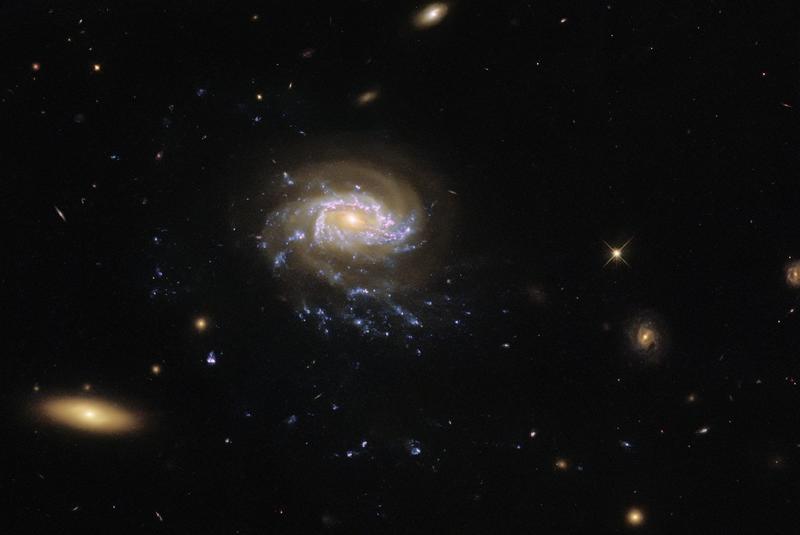 This image from the NASA/ESA Hubble Space Telescope released by NASA on March 3, 2023, shows a "jellyfish galaxy" with trailing tentacles of stars hanging in inky blackness. (PHOTO / ESA/HUBBLE & NASA, M. GULLIEUSZIK)
This image from the NASA/ESA Hubble Space Telescope released by NASA on March 3, 2023, shows a "jellyfish galaxy" with trailing tentacles of stars hanging in inky blackness. (PHOTO / ESA/HUBBLE & NASA, M. GULLIEUSZIK)
LOS ANGELES - NASA's Hubble Space Telescope has captured trailing tentacles of stars that make out a "jellyfish galaxy," according to a picture released recently by the agency.
As "jellyfish galaxies" move through intergalactic space, gas is slowly stripped away forming trails that resemble tendrils illuminated by clumps of star formation.
The new mission will conduct research including examining how the heart changes in space, testing a student-designed camera mount, comparing surfaces that control biofilm formation, and studying life in space, according to NASA
This "jellyfish galaxy," known as JO201, lies in the constellation Cetus, which is named after a sea monster from ancient Greek mythology, according to NASA.
ALSO READ: Hubble telescope records black hole gobbling star
Astronomers hope the observation will provide a better understanding of the connection between ram-pressure stripping, the process that creates the tendrils of jellyfish galaxies, and star formation, said NASA.
New mission in March
The agency on Monday also announced plans to launch a new science mission to the International Space Station in March on studying heart diseases, life in space and more.
It will be NASA's 27th SpaceX commercial resupply services mission. The mission, carried by the uncrewed Dragon spacecraft, will launch from NASA's Kennedy Space Center in Florida.
READ MORE: SpaceX Crew-6 spacecraft docks with International Space Station
The mission will conduct research including examining how the heart changes in space, testing a student-designed camera mount, comparing surfaces that control biofilm formation, and studying life in space, according to NASA.


